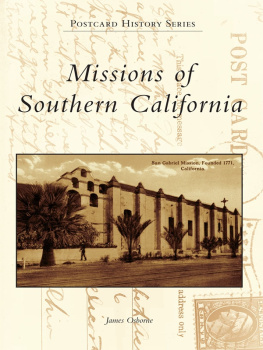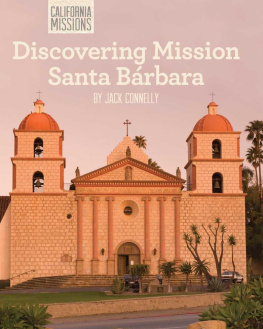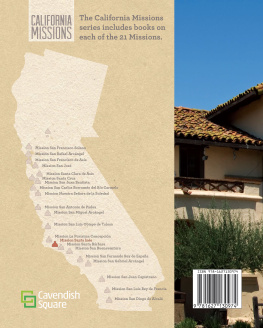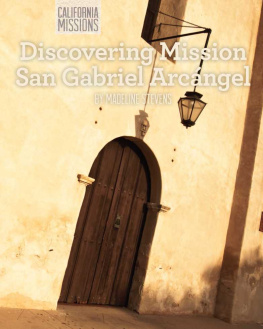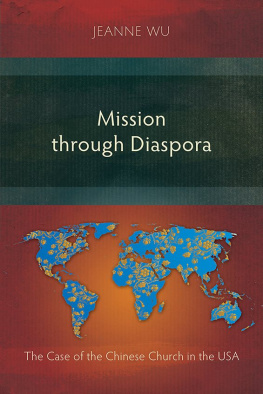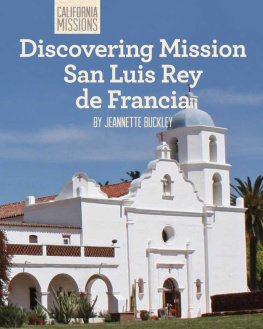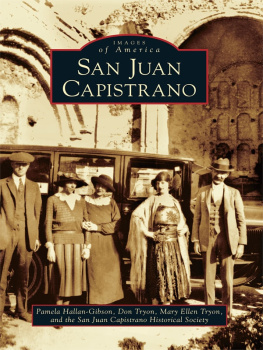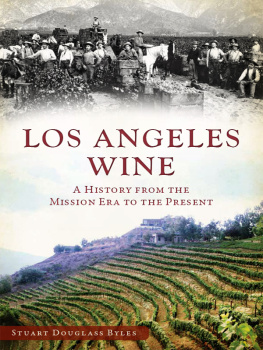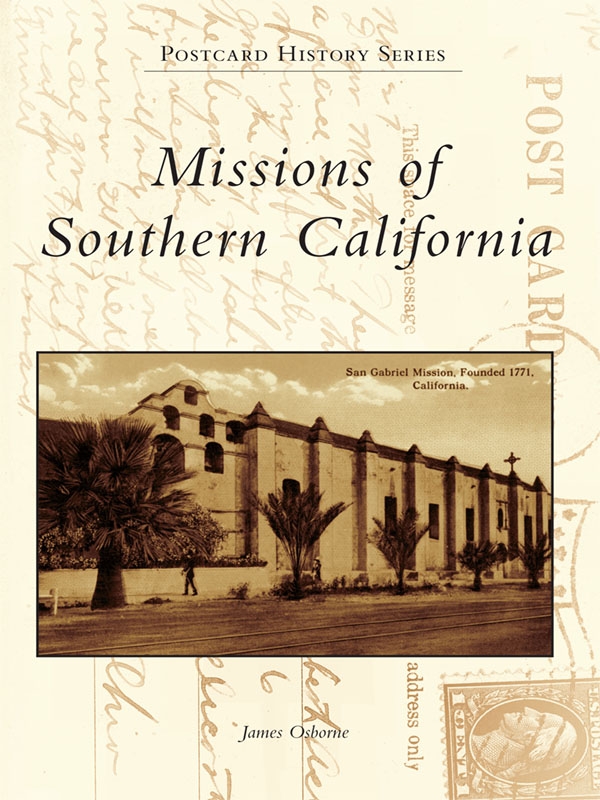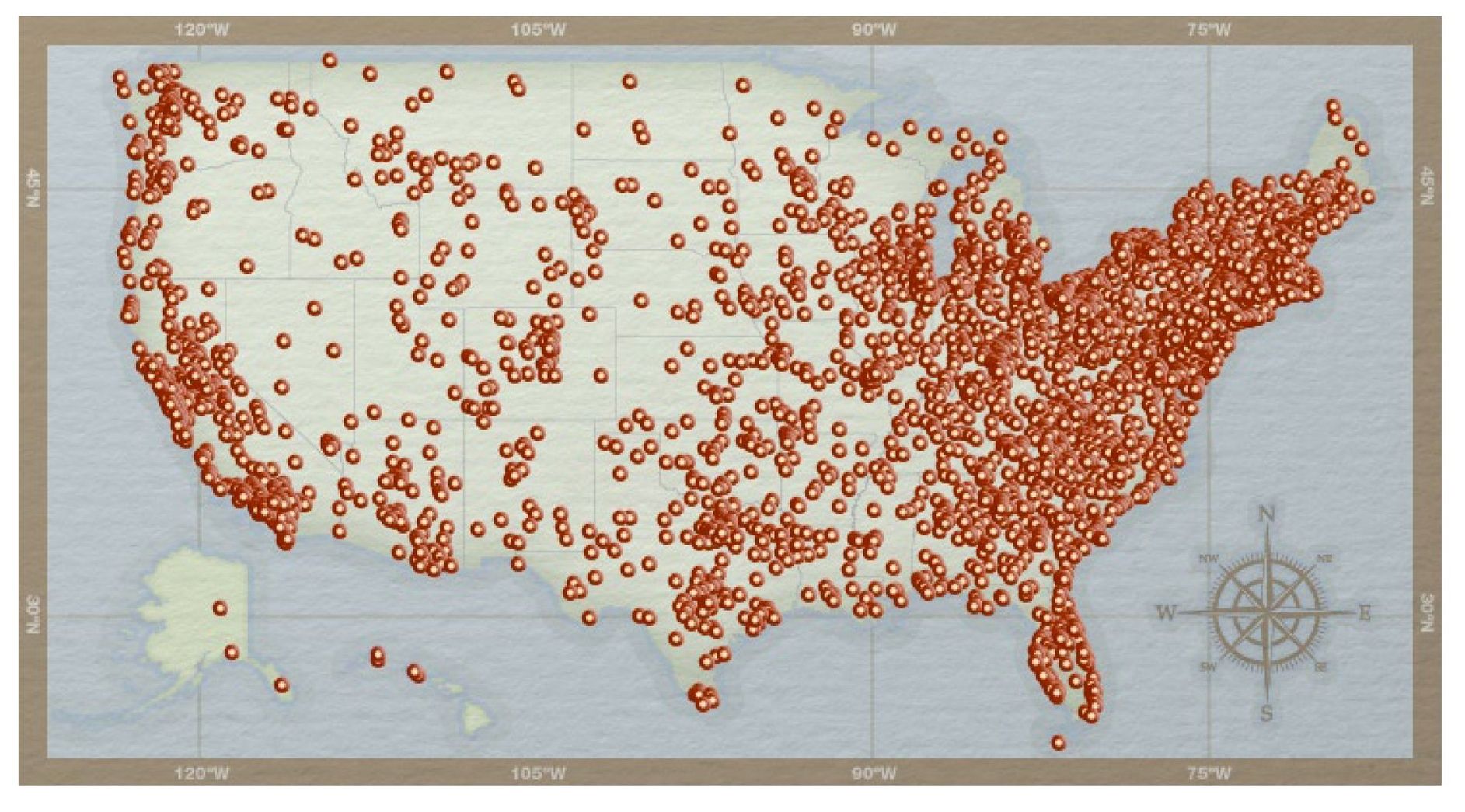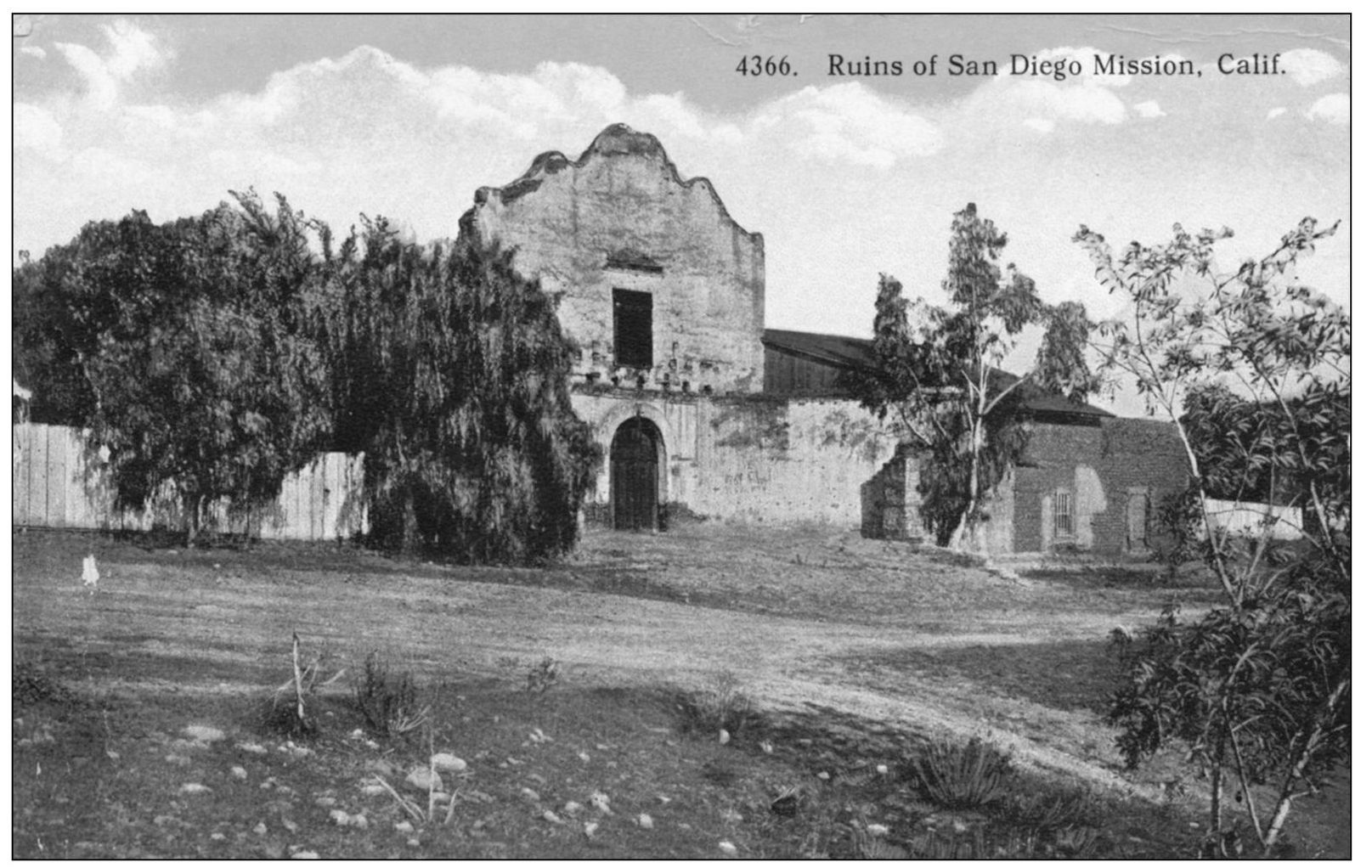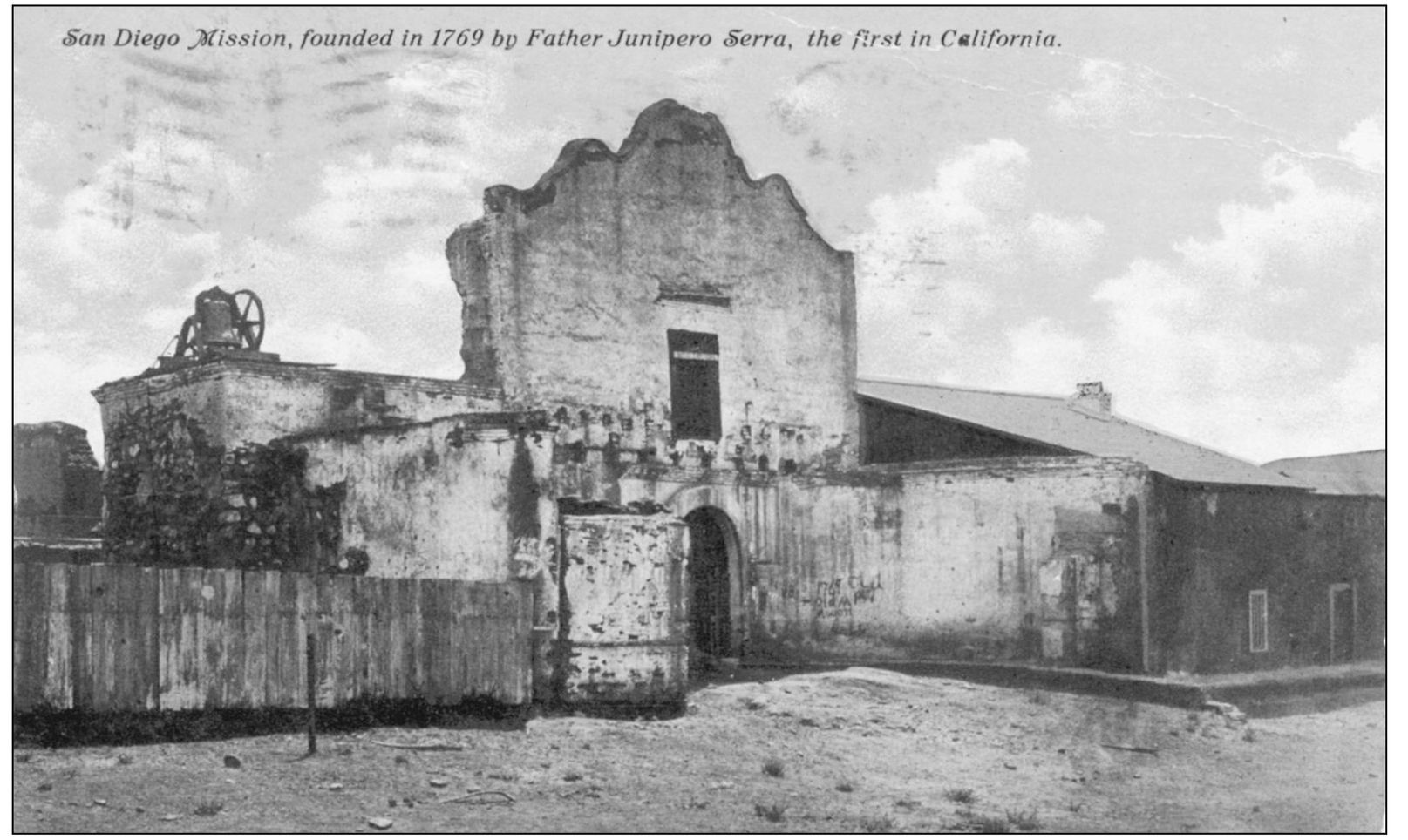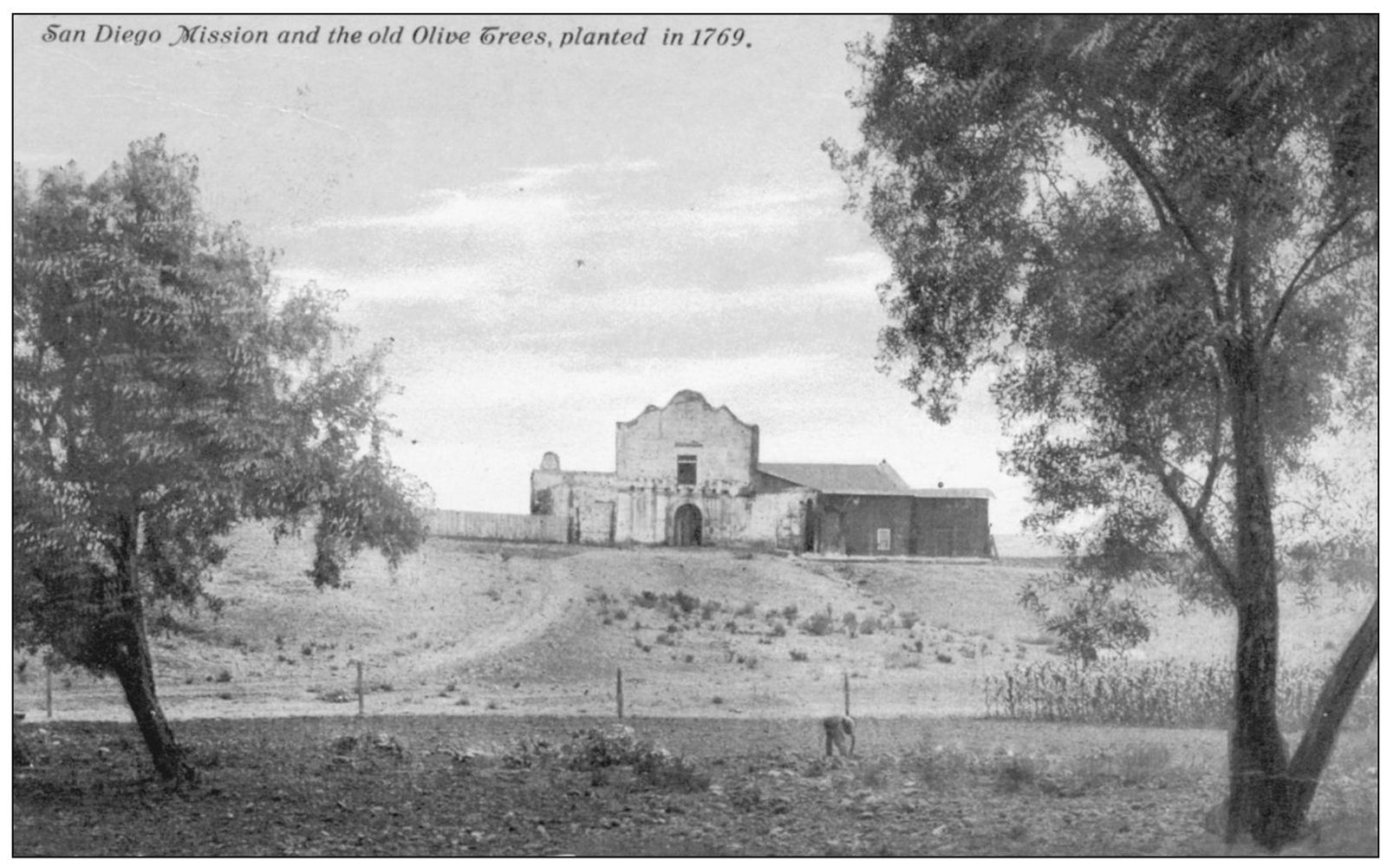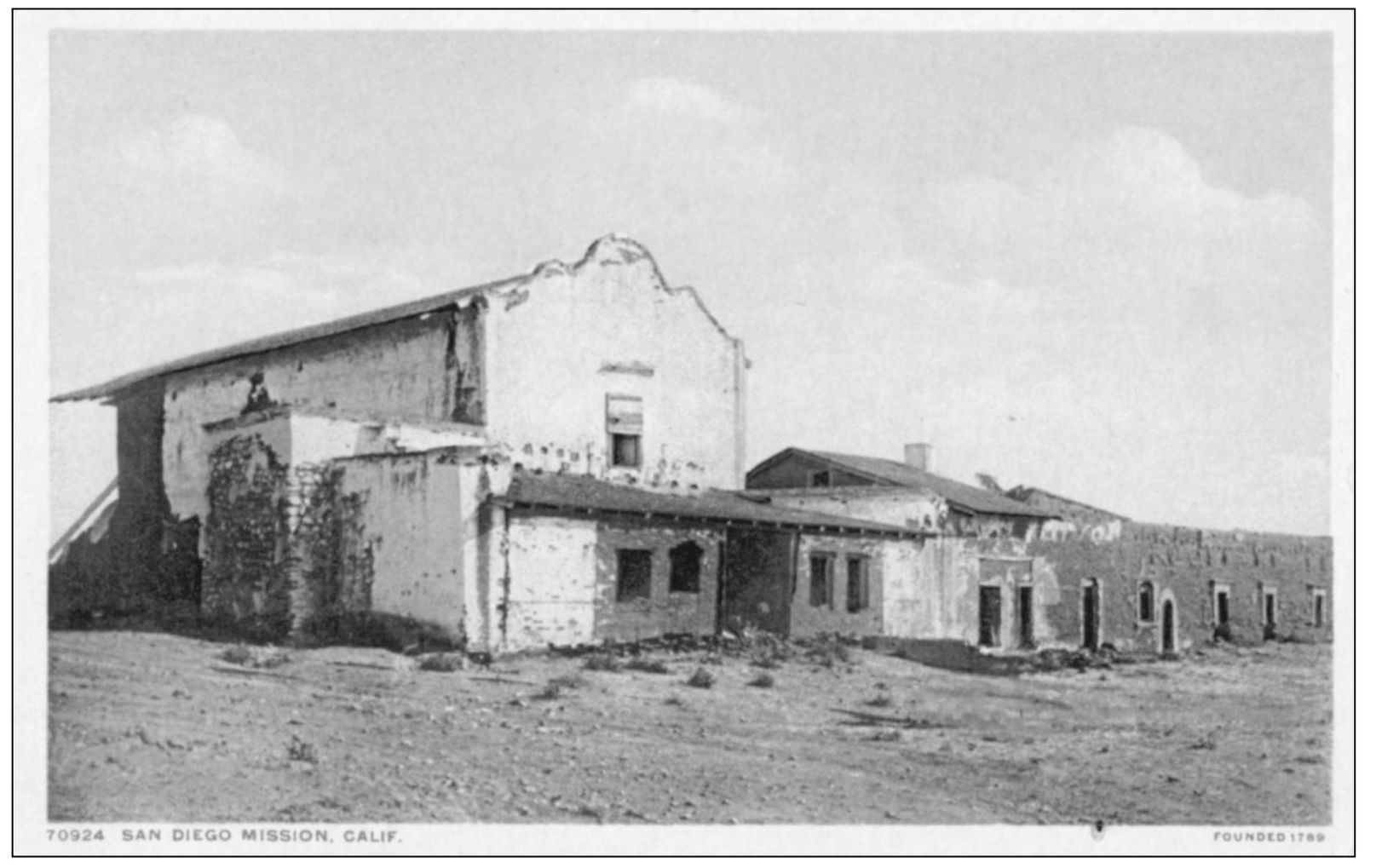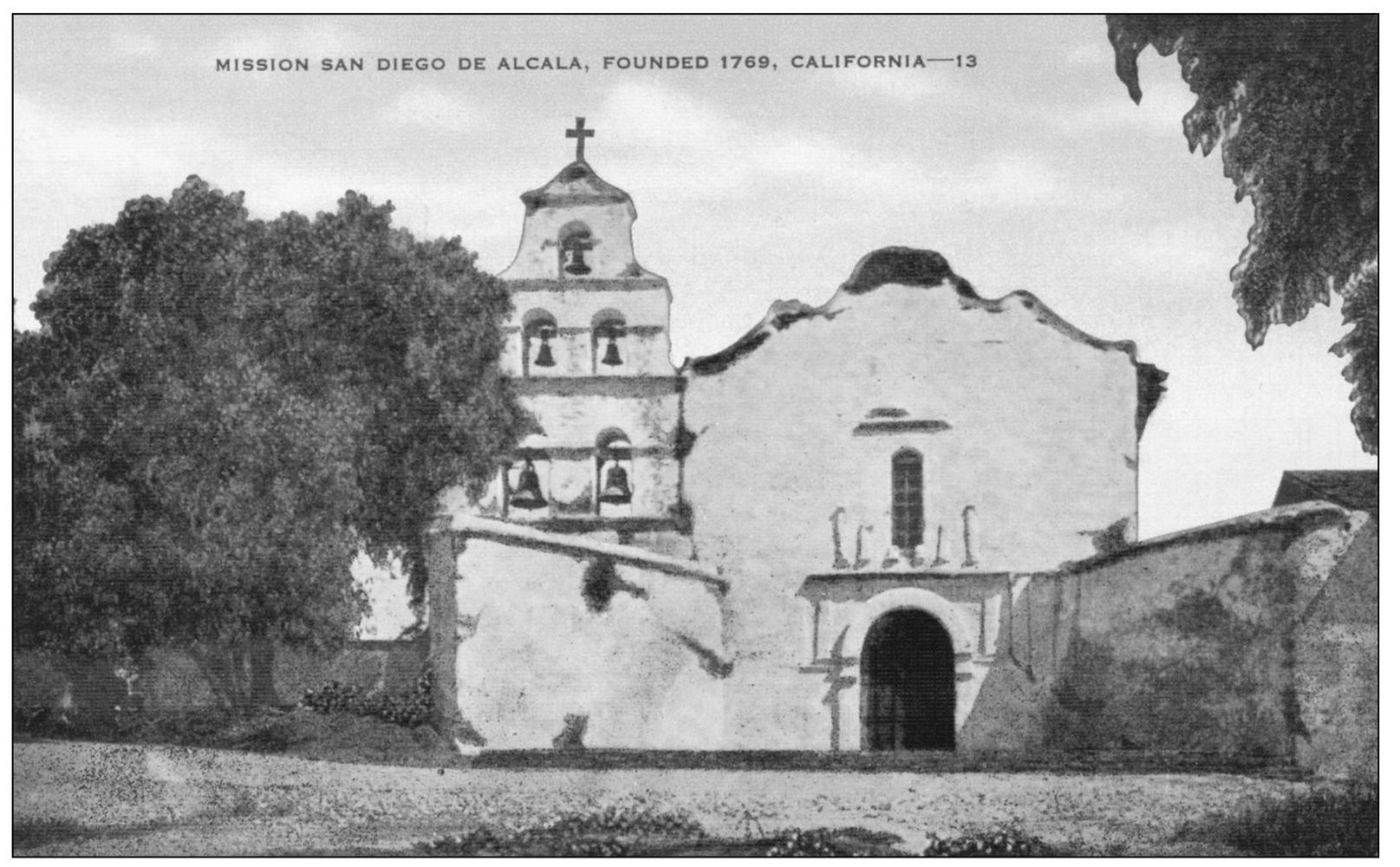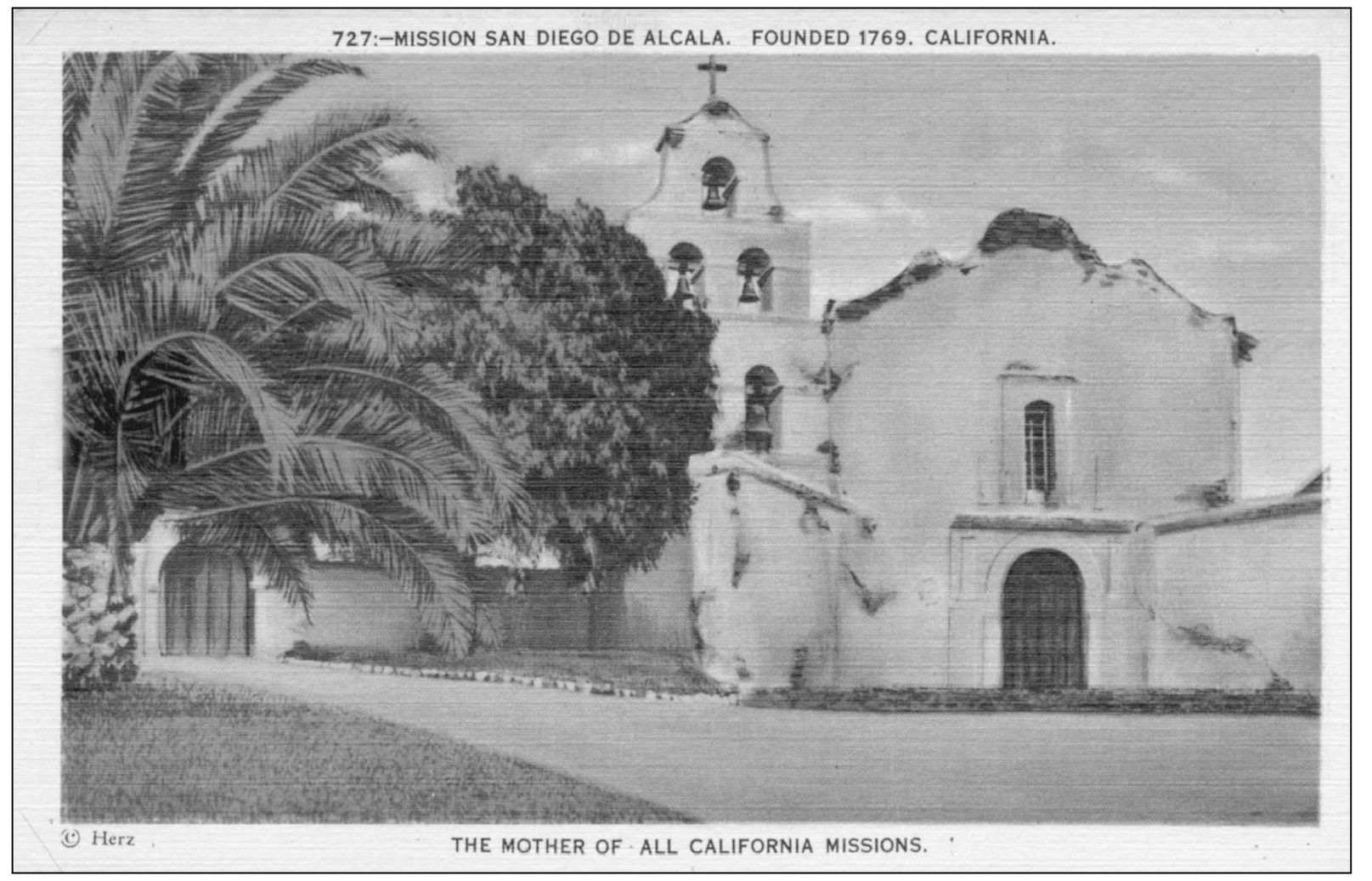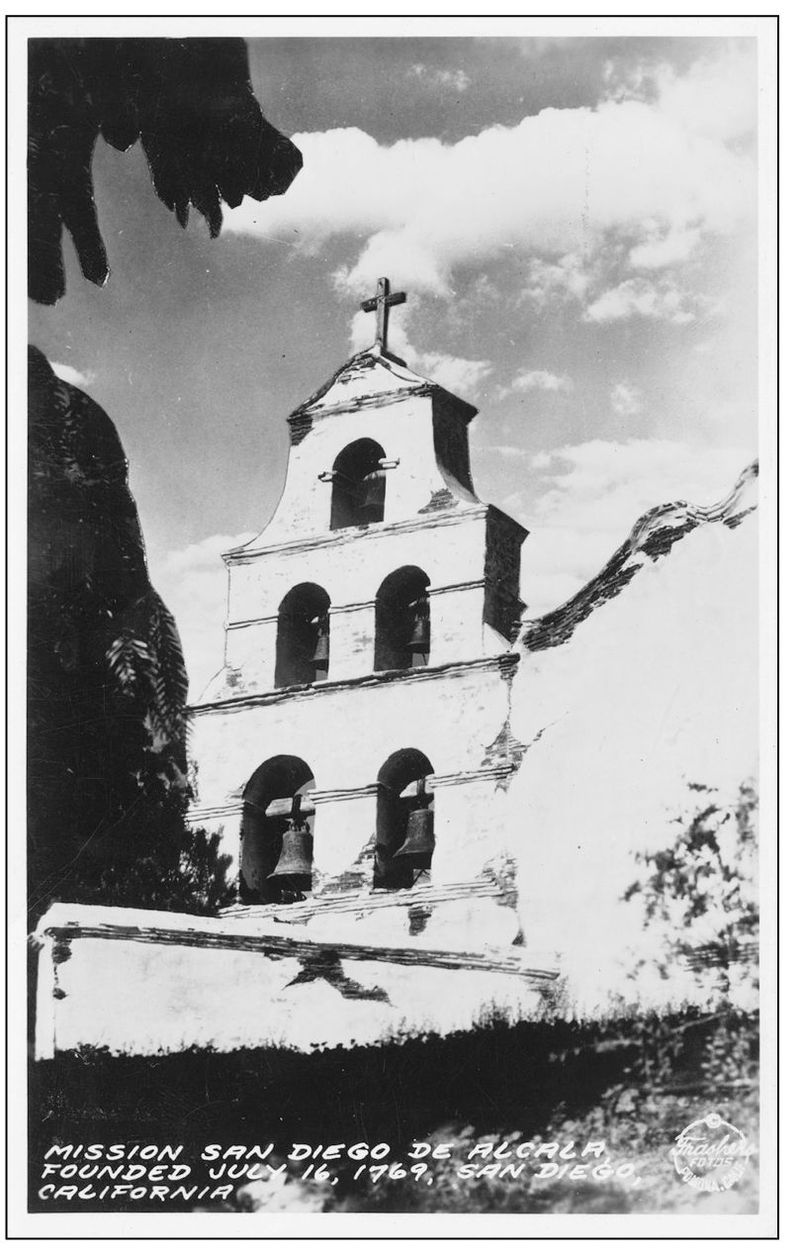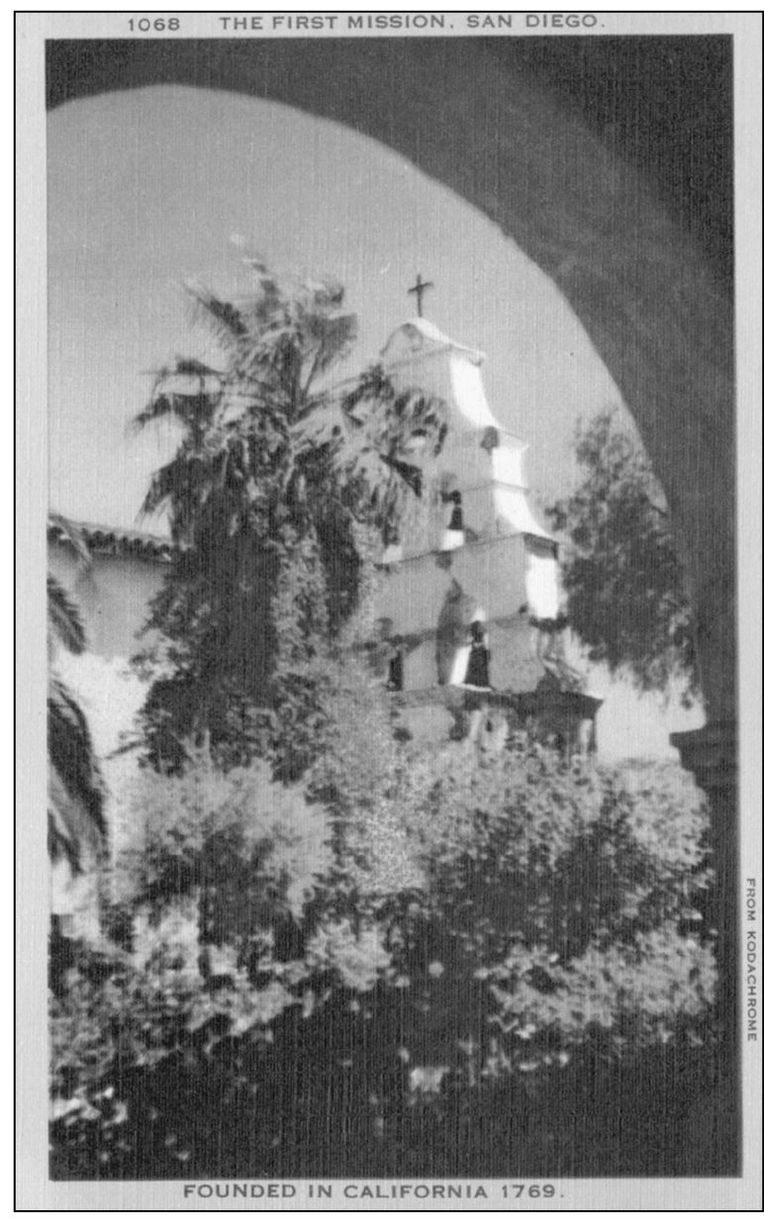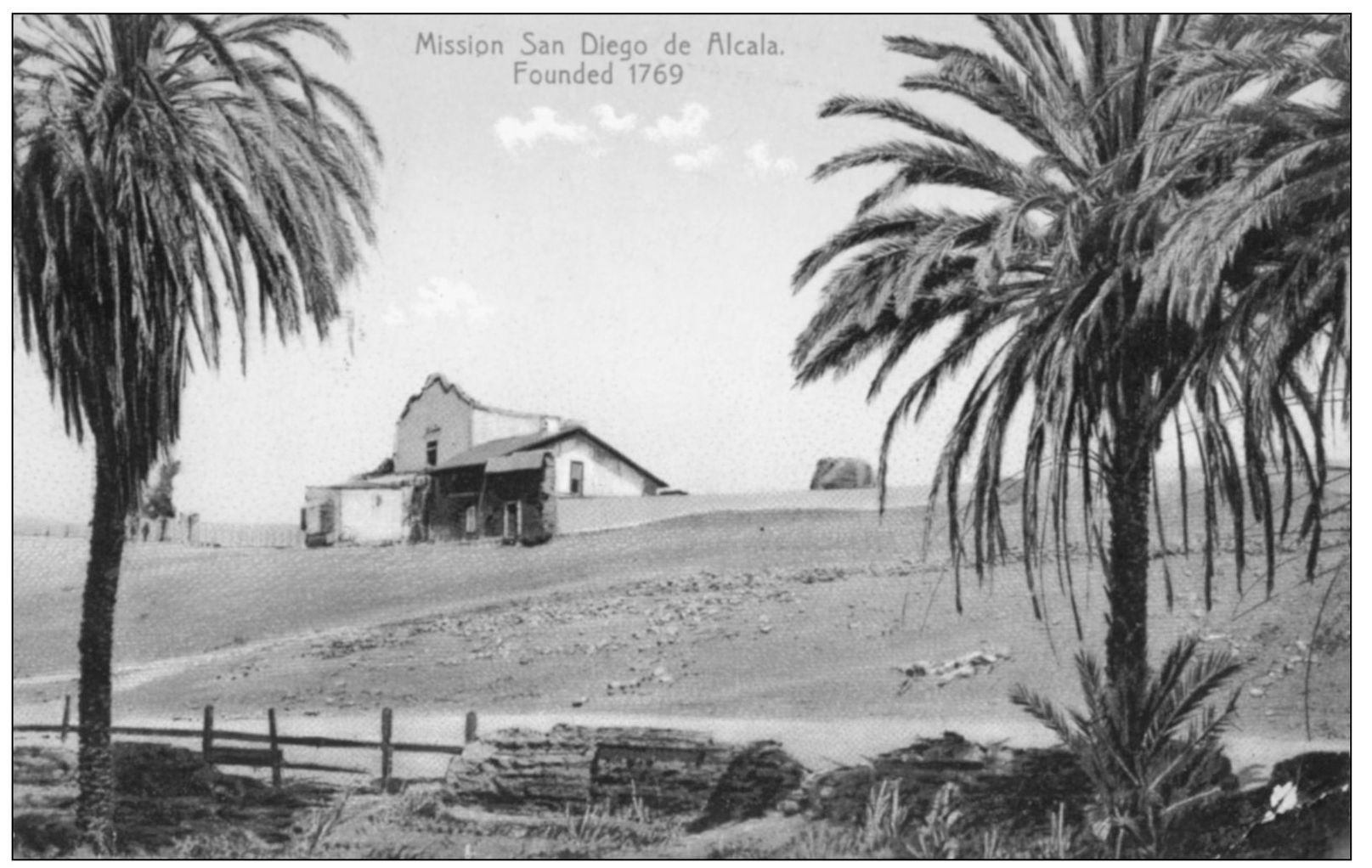First, I wish to thank my grandmother, the late Helen Buss Thomas, who saved and preserved hundreds of early Southern California postcards that were used for correspondence between herself, her friends, and her family. Her collection provided me, and now others, with a useful glimpse into the past. Second, I wish to thank my mother, Laura Osborne, for the gift of her California missions scrapbook that she produced in 1937 as a fourth-grade assignment at Lawndales Central School. This scrapbook contained numerous postcards that were (thankfully) easily removed from their glued-down corner holders. And finally, I wish to thank Arcadia Publishings Jerry Roberts for making this project possible.
BIBLIOGRAPHY
Demarest, Donald. The First Californian, The Story of Fray Junipero Serra. New York, NY: Hawthorn Books, 1963.
Engelhardt, Fr. Zephyrin. San Gabriel Mission and the Beginnings of Los Angeles. Chicago, IL: Franciscan Herald Press, 1927.
Forbes, Mrs. A. S. C. Mission Tales in the Days of the Dons. Chicago, IL: A. C. McClurg and Company, 1909.
Hildrup, Jessie S. The Missions of California and the Old Southwest. Chicago, IL: A. C. McClurg and Company, 1920.
Hudson, William Henry. The Famous Missions of California. New York, NY: Dodge Publishing Company, 1901.
Johnson, Paul C. The California Missions, A Pictorial History. Menlo Park, CA: Sunset Books, 1964.
Lyngheim, Linda. The Indians and the California Missions. Chatsworth, CA: Langstry Publications, 1984.
Sanchez, Nellie Van de Grift. Spanish and Indian Place Names of California. San Francisco, CA: A. M. Robertson, 1914.
Wright, Ralph B. Californias Missions. Los Angeles, CA: The Sterling Press, 1950.
Find more books like this at
www.imagesofamerica.com
Search for your hometown history, your old
stomping grounds, and even your favorite sports team.
One
MISSION SAN DIEGO DE ALCAL
Fr. Junipero Serra founded the first mission in Alta California, San Diego de Alcal, on July 16, 1769. The site was on Presidio Hill, which overlooked the bay of San Diego and resulted in the first Spanish settlement in Alta California. However, in 1774, the mission was relocated six miles upriver, in large part due to the need for more land to support the growing neophyte population. Ironically, in November 1776, an uprising of approximately 800 Native Americans attacked the mission, killing Fr. Luis Jayme, a blacksmith, and a carpenter, and then burned down the mission. After a period of eight months, the burned-out mission was rebuilt and included a fully developed quadrangle design. (Published by I. L. Eno, San Diego, California.)
This postcard was postmarked August 31, 1922, and shows the ruined state of the San Diego mission at the close of the 19th century. The mission takes its name from the canonized Franciscan monk San Diego de Alcal, who lived from 1400 to 1463 and was known for the pious life he led and the miracles wrought through him. (Published by H. L. Christiance, San Diego, California.)
This close-up postcard of the mission San Diego de Alcal includes a postmark on the back side commemorating the completion of the Panama Canal in 1913. The postcard also describes the missions main building as over 150 feet long and walls that are three feet thick. (Published by Eno and Matteson, San Diego, California.)
San Diego Mission and the old Olive Trees, planted in 1769 is written on the back of this card. This postcard was mailed from Redondo Beach, California, on March 4, 1914. The back of the card also states that the olive trees were planted a hundred and forty-one years ago, and also claims they are still bearing fruit. (Published by Eno and Matteson, San Diego, California.)
This postcard depicts the mission about 1892 after the rear of the church had collapsed. Most of the roof tiles had been taken by this time to be recycled into the roofs of homes in the Old Town area of San Diego. (Published by the Detroit Publishing Company, Detroit, Michigan.)
This postcard shows the reconstructed campanario (bell tower) that was re-created as part of the mission restoration project in 1931. The church was in active service until the Mexican secularization of 1829. (Published by the Hopkins News Agency, San Diego, California.)
The Mother of all the California Missions, San Diego de Alcal is seen here in another view of the campanario. A date palm tree can also be seen at the far left of this image. (Published by Herz Postcards, San Diego, California.)
Here an RPPC or real-photo postcard highlights the old bells of the campanario. The bells in the five niches were taken, for a time, from the mission and actually thought forever lost. However, after much searching, they were eventually found and finally rehung. The largest of these bells weighs 1,200 pounds. (Published by Frashers Inc., Pomona, California.)
This linen-era postcard shows the mission gardens at the rear of the campanario. The backside reads, in part, The base of the belfry and the bells are of the original mission, as are the church records written in Padre Serras own hand. (Published by the Longshow Card Company, Los Angeles, California.)
This postcard was printed in Germany and was mailed October 13, 1913, to Aberdeenshire County, Scotland. The message on the reverse side reads, Another one of the mission cards. Hope you appreciate them all. You will when you see the places themselves. (Published by M. Rieder, Los Angeles, California.)

